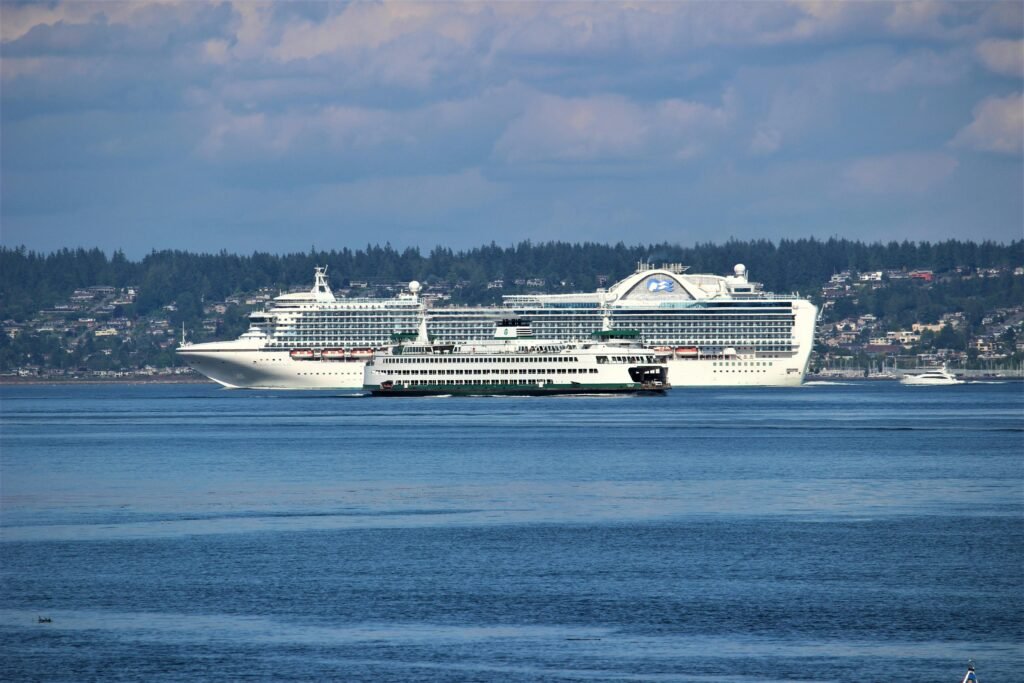Iceland Cruise Ship Fee
Cruising to Iceland has gotten to be one of the fastest-growing travel patterns in Northern Europe. As more voyage lines include Icelandic ports to their agendas, the nation has presented measures to oversee tourism’s affect on its delicate environment and framework. One of the foremost talked about is the Iceland journey transport expense. This charge has picked up consideration from travelers, voyage administrators, and policymakers in both the UK and the USA, where Iceland may be a well known goal for transoceanic voyages.
The expense could appear like a basic charge, but it speaks to a much broader exertion to adjust financial benefits with maintainability. Understanding what this charge is, why it exists, and how it influences travelers is basic for anybody considering a journey to Iceland.
What Is the Iceland Cruise Ship Fee?
The Iceland voyage ship fee may be a charge connected to journey ships that dock in Icelandic ports. It isn’t a level traveler assess like those in a few European cities. Instep, the expense is connected to harbour utilization and the measure or capacity of the vessel. Each transport must pay when it enters an Icelandic harbor, and the taken a toll frequently depends on tonnage or the number of travelers on board.
This charge is isolated from traveler benefit charges or onboard journey costs. Most travelers will not see it recorded on their ticket, as journey lines ordinarily join it into their by and large working costs. In any case, the affect may by implication reflect in voyage estimating, shore trip costs, or harbour day plans.
Why Was the Fee Introduced?
Iceland’s tourism industry has extended drastically over the past decade. Journey activity in specific has surged, with thousands of travelers arriving at once in Reykjavik, Akureyri, or littler ports. Whereas tourism gives financial development, it moreover puts weight on neighborhood communities, framework, and characteristic assets.
The journey dispatch expense makes a difference support harbour administrations, natural shields, and offices that oblige huge numbers of guests. Iceland’s interesting topography and fragile biological systems make administration crucial. Without such a expense, the burden would drop more intensely on nearby citizens, indeed in spite of the fact that much of the affect comes from worldwide guests.
The presentation of the charge moreover reflects Iceland’s broader supportability objectives. The government and regions need to guarantee that tourism remains long-term and mindful, instead of overpowering communities or harming the exceptionally scenes that pull in guests.
How Much Does the Fee Cost?
The genuine sum of the Iceland voyage transport charge shifts. Components incorporate transport measure, net tonnage, and the sort of harbour office utilized. A huge worldwide voyage liner will pay altogether more than a little endeavor vessel. A few ports charge extra expenses for squander administration or natural assurance measures.
Travelers may never see a line thing for the expense. Instep, voyage lines construct these costs into the voyage estimating. This implies the affect for travelers is unobtrusive, but it does play a part within the generally taken a toll structure of cruising to Iceland.
For UK and US travelers, this clarifies why Iceland-bound travels can now and then show up more costly than courses to other Northern European destinations.
Which Ports in Iceland Charge the Fee?
Most Icelandic ports that handle voyage activity apply a few shape of docking charge. Reykjavik, as the capital and largest port, sees the lion’s share of voyage entries and collects noteworthy revenue from the framework. Akureyri in the north and Ísafjörður within the Westfjords too apply comparative expenses. Littler ports with undertaking transport get to, such as Seyðisfjörður within the east, take an interest as well.
Since Iceland’s coastline is rough and numerous ports are found close little towns, the charge contributes directly to neighborhood framework updates, from squander collection to traveler offices.

How Does the Fee Affect Cruise Travelers?
For travelers, the Iceland journey ship fee is generally imperceptible. It is paid by the voyage line instead of the person traveler. Be that as it may, there are a few backhanded impacts worth noting:
-
Journey costs may reflect the extra working costs.
-
Shore trip costs can be affected by nearby benefit expenses associated to harbour calls.
-
A few agendas may constrain the number of Icelandic ports included, depending on generally costs.
-
Voyage lines may alter plans to maximize time in high-demand ports where expenses are as of now portion of the taken a toll condition.
Travelers ought to get it that whereas the expense may include to their trip fetched, it moreover makes a difference keep up offices, natural assurance, and smoother operations amid harbour visits.
Why Does the Fee Matter for Sustainability?
Journey tourism can strain assets. Expansive ships bring thousands of travelers into towns with populations of as it were a number of thousand. Squander transfer, transport administrations, and swarm administration require subsidizing. The journey transport charge guarantees that Iceland isn’t overpowered by sudden surges in tourism without legitimate recompense.
The reserves frequently go toward:
-
Harbour support and framework advancements.
-
Squander and reusing offices for ships.
-
Environmental observing programs.
-
Security and security administrations for travelers.
This show adjusts with Iceland’s long-term commitment to feasible tourism. The nation has as of now actualized measures such as constraining the number of guests to delicate characteristic destinations, charging entry expenses for national parks, and controlling visit administrator licenses. The journey dispatch charge is portion of this broader exertion.
How Does It Compare to Other Countries’ Fees?
Iceland isn’t alone in applying expenses to journey ships. Numerous goals, from Gold country to the Mediterranean, charge harbour expenses and natural demands. In Gold country, for illustration, there’s a per-passenger head charge. In Venice, Italy, specialists have presented comparative charges to oversee overtourism.
Compared with these, Iceland’s framework is more centered on dispatch size and harbour utilization instead of straightforwardly burdening travelers. This approach targets the administrators instead of people but still guarantees that costs are disseminated decently.
Is the Fee Likely to Increase?
There has been continuous talk in Iceland approximately altering expenses as voyage activity proceeds to develop. A few districts contend that bigger ships ought to pay higher rates to cover the natural affect. Others accept expenses ought to finance territorial advancement to adjust the financial benefits over Iceland.
Whereas increments are conceivable, journey lines calculate these costs into long-term arranging. Travelers may in the long run take note higher journey costs in case harbour expenses rise, but the changes will likely be progressive instead of sudden.
What Should UK and US Travelers Know?
In the event that you’re booking a journey to Iceland from the UK or USA, here are the key points to be beyond any doubt. To begin with, you may not have to be pay the charge directly. It is portion of the working costs retained by the journey line. Moment, journey costs may be marginally higher compared with courses that don’t include Iceland, but this reflects the special goal encounter. Third, the charge contributes to maintainability and quality, meaning your visit makes a difference protect Iceland’s common excellence for end of the.
Travelers ought to moreover know that Iceland remains a secure, inviting, and well-organized goal. The voyage dispatch charge does not diminish the esteem of the encounter but instep supports smoother harbour visits, cleaner offices, and protected scenes.
Voice Search Queries and Direct Answers
Numerous travelers look questions by voice some time recently booking. Here are brief, coordinate answers to the foremost common inquiries.
Do I need to pay the Iceland journey transport expense myself?
No, travelers don’t pay it straightforwardly. Journey lines pay the fee, and it may be included in your in general journey taken a toll.
Why does Iceland charge journey ships?
Iceland charges voyage ships to support harbour administrations, secure the environment, and oversee tourism reasonably.
Will the expense make my journey more costly?
Yes, but as it were by implication. Journey lines calculate it into estimating, so you’ll pay marginally more compared with non-Icelandic schedules.
Does each Iceland harbour have a expense?
Most major journey ports, counting Reykjavik, Akureyri, Ísafjörður, and Seyðisfjörður, charge a expense.
Is Iceland the as it were nation with such a expense?
No, numerous goals around the world charge voyage harbour expenses, but Iceland’s framework is custom fitted to its supportability objectives.

How Cruise Lines Respond to the Fee
Journey administrators for the most part acknowledge the Icelandic expense as portion of doing commerce in Northern Europe. Numerous companies highlight their commitment to capable tourism, so consolidating the charge adjusts with their supportability vows. A few journey lines moreover work with Icelandic specialists on harbour improvement ventures, guaranteeing smoother operations for future seasons.
The expense has too affected agenda arranging. A few companies plan longer remains in Reykjavik to maximize harbour utilization esteem, whereas others investigate littler ports for specialty encounters. Expedition-style travels, with less travelers, frequently pay less but advance high-value tourism in inaccessible locales.
The Future of Cruise Tourism in Iceland
The Iceland journey transport fee is as it were one portion of a bigger discussion around long term of tourism within the nation. Iceland proceeds to adjust quick development with environmental preservation. Specialists are investigating ways to spread tourism more equitably over locales, decrease clog at major locales, and move ports toward greener vitality arrangements.
Voyage ships themselves are changing, with modern vessels receiving cleaner fuels and emissions innovation. The fee system may eventually adapt to remunerate ecologically inviting ships whereas charging more to those with higher emanations. This would adjust with Iceland’s climate objectives and energize greener hones industry-wide.
Is the Fee Worth It for Travelers?
For most travelers, the Iceland voyage dispatch expense is worth the little roundabout fetched. The result is cleaner ports, way better facilities, and preserved scenes. When you step off a voyage dispatch in Reykjavik or Akureyri, you advantage from ventures financed by the expense. Without it, the guest encounter would likely endure.
In the greater picture, the charge speaks to a capable approach to mass tourism. Iceland is guaranteeing that the costs of facilitating huge journey ships are shared reasonably which the benefits expand to both travelers and nearby communities.
FAQs
Does the Iceland journey transport expense affect independent travelers?
No, it applies as it were to journey ships, not to individuals flying into Iceland or traveling autonomously.
Can the expense be avoided?
No, all ships docking in Iceland must pay it. Journey lines calculate this into their estimating.
Will I see the charge on my voyage charge?
Not specifically. It is included within the cruise line’s working costs.
Does the charge progress my encounter as a traveler?
Yes, since it stores offices, squander administration, and natural assurance, making harbour visits smoother and more pleasant.
Is Iceland attempting to restrain journey tourism with this charge?
Not necessarily. The objective is to oversee it reasonably, not dispose of it.
Conclusion
The Iceland journey dispatch expense could appear like a minor technical charge, but it plays a major part in forming how tourism creates within the country. For travelers from the UK and USA, understanding this expense makes a difference clarify the costs, arrangements, and supportability endeavors behind an Icelandic voyage agenda.
By charging ships instead of travelers straightforwardly, Iceland guarantees that voyage tourism contributes decently to infrastructure and natural administration. The result could be a cleaner, more secure, and more maintainable involvement for everybody.
As journey request develops, the charge is likely to advance, but its center reason will stay the same: securing Iceland’s delicate environment whereas inviting guests from around the world. For travelers, it isn’t a burden but a consolation that their visit supports a maintainable future.




